
Namur: The Heart of Wallonia
Discover Namur, the capital of Wallonia, where history, culture, and gastronomy converge at the picturesque confluence of the Meuse and Sambre rivers.
Namur, the capital of Wallonia, is a charming city nestled at the confluence of the Meuse and Sambre rivers. Steeped in history, this picturesque city boasts stunning architecture, a rich cultural heritage, and a vibrant atmosphere. The city's centerpiece is the Citadel of Namur, a sprawling fortress offering panoramic views of the surrounding landscape. Wander through its ancient walls and discover the history of this remarkable stronghold. Stroll through the old town's cobbled streets, where you'll find quaint boutiques, lively cafes, and impressive landmarks such as the Saint-Aubin Cathedral and the Belfry of Namur. The city's museums, including the Felicien Rops Museum and the Art Museum of Namur, showcase local art and history, providing a deeper understanding of the region's cultural significance. Namur is also renowned for its culinary delights. Indulge in traditional Walloon cuisine at one of the many local restaurants, or visit the bustling markets to sample fresh produce and regional specialties. Whether you're exploring the scenic riverside, attending one of the city's many festivals, or simply soaking up the serene ambiance, Namur offers a memorable experience for every traveler.
Local tips in Namur
- Visit the Citadel of Namur early in the morning to avoid crowds and enjoy the best views.
- Take a river cruise on the Meuse for a unique perspective of the city.
- Don't miss the local markets, especially the Saturday market at Place du Vieux.
- Try the local dish 'escavèche', a marinated fish specialty, at a traditional Walloon restaurant.
- Use the city's bike-sharing system to explore Namur's scenic routes and parks.
Namur: The Heart of Wallonia
Namur, the capital of Wallonia, is a charming city nestled at the confluence of the Meuse and Sambre rivers. Steeped in history, this picturesque city boasts stunning architecture, a rich cultural heritage, and a vibrant atmosphere. The city's centerpiece is the Citadel of Namur, a sprawling fortress offering panoramic views of the surrounding landscape. Wander through its ancient walls and discover the history of this remarkable stronghold. Stroll through the old town's cobbled streets, where you'll find quaint boutiques, lively cafes, and impressive landmarks such as the Saint-Aubin Cathedral and the Belfry of Namur. The city's museums, including the Felicien Rops Museum and the Art Museum of Namur, showcase local art and history, providing a deeper understanding of the region's cultural significance. Namur is also renowned for its culinary delights. Indulge in traditional Walloon cuisine at one of the many local restaurants, or visit the bustling markets to sample fresh produce and regional specialties. Whether you're exploring the scenic riverside, attending one of the city's many festivals, or simply soaking up the serene ambiance, Namur offers a memorable experience for every traveler.
When is the best time to go to Namur?
Iconic landmarks you can’t miss
Les Jardins d’Annevoie
Discover the serene beauty of Les Jardins d’Annevoie, a stunning botanical garden featuring exquisite floral displays and tranquil water features in Belgium.

Parc attractif Reine Fabiola
Experience the joy and excitement of Parc attractif Reine Fabiola, a premier children's amusement center in Namur, Belgium, perfect for family fun.

Château de Namur
Discover the charm of Château de Namur, where exquisite cuisine meets historic elegance in the heart of Belgium's picturesque capital.

parc Louise-Marie
Explore the serene beauty of Parc Louise-Marie in Namur, a captivating city park perfect for relaxation and nature appreciation amidst vibrant greenery.

Terra Nova
Explore the enchanting history of Namur at Terra Nova Museum, where captivating exhibits and rich cultural heritage await every visitor.

Musée Provincial Félicien Rops
Explore the Musée Provincial Félicien Rops, an art museum in Namur dedicated to the works of the iconic Belgian artist Félicien Rops and contemporary exhibitions.
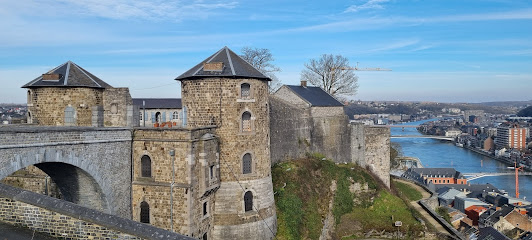
Pont de Jambes
Experience the allure of the Pont de Jambes, a stunning bridge in Namur that embodies the rich history and vibrant culture of Belgium's capital.

Namur Cathedral
Discover the breathtaking Namur Cathedral, a stunning Gothic masterpiece in the heart of Namur, Belgium, rich in history and cultural significance.

Église catholique Saint-Loup
Explore the breathtaking Église catholique Saint-Loup in Namur, Belgium, a stunning Baroque church rich in history and architectural beauty.

Musée des arts anciens
Discover the artistic heritage of Namur at the Musée des Arts Anciens, showcasing a diverse collection from ancient to contemporary art.

Museum of Decorative Arts of Namur
Explore the Museum of Decorative Arts in Namur, where history and creativity come to life through exquisite collections and captivating exhibitions.

Le Jardin des Secrets
Experience the charm of Le Jardin des Secrets in Namur, a perfect blend of comfort and nature, ideal for a serene getaway in Belgium.

Belfry of Namur
Discover the stunning Belfry of Namur, a UNESCO site offering breathtaking views, rich history, and captivating exhibits in the heart of Belgium.

Namur Tourist Office
Discover Namur's hidden gems and rich culture at the Namur Tourist Office, your ultimate guide to this charming Belgian city.

Fort St. Heribert
Discover the historical Fort St. Heribert in Namur, Belgium, a captivating fortress museum showcasing the region's military heritage and breathtaking views.
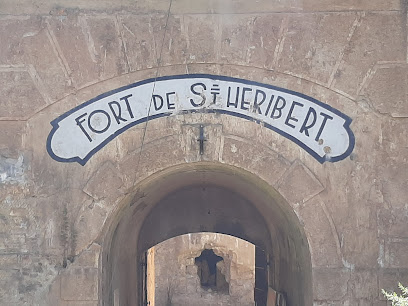
Unmissable attractions to see
Citadelle de Dinant
Discover the breathtaking Citadelle de Dinant, a historical fortress offering stunning views and rich cultural heritage in the heart of Belgium.

Citadelle de Namur
Discover the Citadelle de Namur, a stunning fortress offering breathtaking views and rich history, perfect for every traveler in Belgium.

Lion's Mound
Discover the historical significance of the Lion's Mound in Braine-l'Alleud, a monumental tribute to the Battle of Waterloo and a site of breathtaking views.

Botanical Garden
Explore the serene beauty of Leuven's Botanical Garden, a historic oasis filled with diverse plant species and tranquil landscapes.

Park van Tervuren
Discover the serene beauty and rich history of Park van Tervuren, a beloved natural retreat in Belgium, perfect for nature lovers and family outings.

Groot Begijnhof Leuven
Explore the serene and historic Groot Begijnhof in Leuven, a UNESCO World Heritage site rich in culture and architectural beauty.
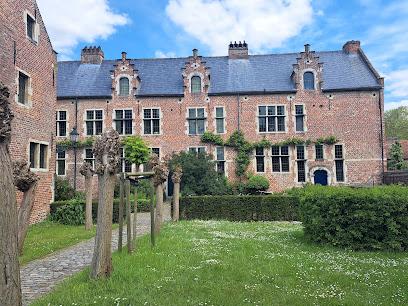
Ladeuzeplein
Discover the lively and cultural heart of Leuven at Ladeuzeplein, where history, art, and vibrant community life come together.

Maison Leffe
Explore the history and craftsmanship of Leffe beer at Maison Leffe in Dinant, a must-visit destination for beer lovers and cultural enthusiasts alike.

Les Jardins d’Annevoie
Explore the enchanting Les Jardins d’Annevoie, a serene botanical garden in Belgium featuring stunning landscapes, historic fountains, and vibrant flora.

Radhadesh domain
Explore Radhadesh Domain in Durbuy: A unique fusion of spirituality, culinary excellence, and cultural heritage awaits.

M Leuven
Explore the vibrant world of contemporary art at M Leuven, a must-visit museum in Belgium that showcases innovative exhibitions and stunning architecture.

Théâtre de Namur
Discover the rich cultural heritage of Namur at the Théâtre de Namur, a stunning venue for performing arts and unforgettable experiences.

Arenberg Castle
Explore the enchanting Arenberg Castle in Leuven, a historical treasure with stunning architecture and beautiful gardens, perfect for a peaceful getaway.

Red Cloister
Explore the serene Red Cloister in Auderghem, where history, art, and nature meet in a tranquil retreat for all travelers.

Parc attractif Reine Fabiola
Experience fun and adventure at Parc Attractif Reine Fabiola, a family-friendly amusement park in Namur, Belgium, offering rides and attractions for all ages.

Essential places to dine
Brasserie François
Discover authentic Belgian flavors at Brasserie François in Namur – where culinary tradition meets modern hospitality.

La Brasserie du Quai
Experience exquisite French cuisine at La Brasserie du Quai, where every meal is accompanied by breathtaking views of the Meuse River.
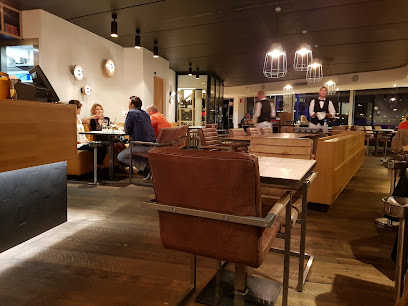
Le Panorama
Experience breathtaking views and exquisite Belgian cuisine at Le Panorama in Namur - where every meal is paired with stunning landscapes.

Château de Namur
Discover culinary excellence and historic charm at Château de Namur - where fine dining meets luxurious accommodation in Belgium's scenic capital.

Mykonos Restaurant
Experience authentic Greek flavors at Mykonos Restaurant in Namur – where every meal is a taste of Greece!
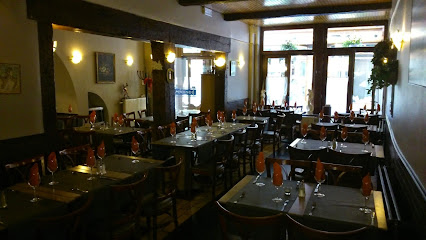
Brasserie Mr Edgard
Experience authentic Belgian cuisine at Brasserie Mr Edgard in Namur - where tradition meets modern culinary excellence.

L'essentiel
Experience exquisite fine dining at L'essentiel in Namur - where every dish tells a story of Belgian culinary excellence.

Brasserie - Restaurant Bodart
Experience exquisite dining at Brasserie - Restaurant Bodart in Namur, where local flavors meet contemporary cuisine amidst charming surroundings.

Bistro Belgo Belge
Savor the essence of Belgium at Bistro Belgo Belge - where traditional cuisine meets local charm in the heart of Namur.

1Passetemps
Experience authentic Belgian cuisine and vibrant cocktails at 1Passetemps, your culinary destination in Namur.

La Cantina Namur
Discover La Cantina Namur: A delightful Mediterranean restaurant offering exquisite tapas in a vibrant setting at the heart of Namur.

Restaurant San Marino
Experience authentic Italian cuisine in Namur at Restaurant San Marino - where every meal feels like a trip to Italy.

Le Grill des Tanneurs
Experience mouthwatering barbecue delights in the heart of Namur at Le Grill des Tanneurs – where flavor meets tradition.

Le Peanuts
Experience authentic Belgian brasserie cuisine at Le Peanuts in Namur – where flavor meets tradition.

L'Espieglerie Namur
Discover the flavors of Belgium at L'Espieglerie in Namur - where culinary artistry meets local tradition.

Markets, malls and hidden boutiques
INNO Namur
Experience a shopping paradise at INNO Namur, where fashion meets local culture in the heart of Belgium's beautiful city.

H&M
Discover the latest trends in fashion for everyone at H&M in Namur, where style meets affordability in a vibrant shopping experience.

L'Original Namur
Discover unique boots and trendy fashion at L'Original Namur, the ultimate destination for style enthusiasts in the heart of Namur.
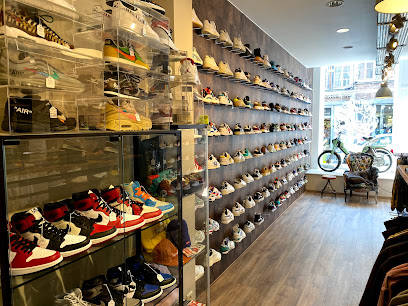
Undiz
Explore Undiz in Namur for stylish lingerie, chic swimwear, and trendy women's clothing in a vibrant shopping environment that inspires your personal style.

Bershka
Discover the latest fashion trends at Bershka in Namur, where style meets affordability in a vibrant shopping environment.

EXPO Boutique
Explore EXPO Boutique in Namur for unique home goods and souvenirs that celebrate Belgian craftsmanship and design.

L'Empreinte Belge
Explore the charm of Belgian craftsmanship and indulge in authentic cuisine at L'Empreinte Belge in Namur.

Veritas Namur
Discover unique fashion accessories, children's clothing, and craft supplies at Veritas Namur, your go-to store for creativity in the heart of Belgium.

Maroquinerie Pirlot
Discover the elegance of Maroquinerie Pirlot in Namur, your go-to destination for exquisite leather goods and personalized service.

Flying Tiger Copenhagen
Explore Flying Tiger Copenhagen in Namur for unique gifts, DIY supplies, and whimsical home goods in a colorful and fun shopping environment.

Un p'tit coin de parapluie
Explore Un p'tit coin de parapluie in Namur: A treasure trove of local craftsmanship and unique souvenirs that capture the essence of Belgium.
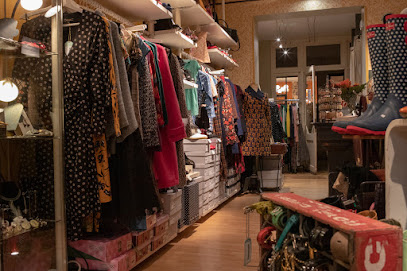
Hunkemöller Namur
Explore Hunkemöller Namur for an exquisite range of lingerie and women's clothing, perfect for every occasion in beautiful Namur, Belgium.

Boutique Galler Namur
Discover Boutique Galler Namur: A Chocolate Lover's Dream in the Heart of Belgium, Offering Exquisite Artisanal Delights and Unforgettable Flavors.

L'Envol du Colibri
Explore L'Envol du Colibri in Namur for a unique blend of fashion and health foods, perfect for the discerning tourist.

Lovely Sins Love Shop
Discover your sensual side at Lovely Sins Love Shop in Namur, where elegance meets intimacy in a welcoming atmosphere.

Essential bars & hidden hideouts
Barnabeer
Discover the heart of Namur at Barnabeer, where local brews and a cozy atmosphere create the perfect gathering spot for tourists and locals alike.

Café Havana
Discover the vibrant atmosphere of Café Havana in Namur, where tropical cocktails and lively nights come together for an unforgettable experience.
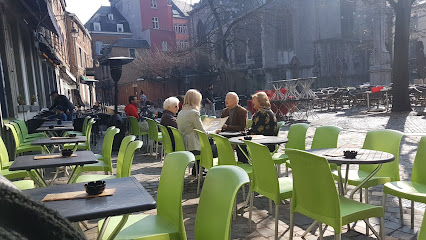
Court Jester (The)
Discover the vibrant atmosphere and delightful drinks at Court Jester, Namur's premier bar and cafe, perfect for tourists and locals alike.

Boulevard du Rhum
Experience the finest cocktails at Boulevard du Rhum, Namur's premier cocktail bar with a vibrant atmosphere and expertly crafted drinks.

Piano Bar Namur
Experience the heart of Namur's nightlife at Piano Bar Namur, where live music and vibrant atmosphere create unforgettable memories.

Le Chapitre
Discover the vibrant atmosphere and extensive beer selection at Le Chapitre, a must-visit beer hall in the heart of Namur, Belgium.

Botanical by Alfonse
Discover the artistic mixology and vibrant ambiance of Botanical by Alfonse, the premier cocktail bar in Namur, Belgium.

Vino Vino
Discover Vino Vino in Namur, a cozy wine bar offering an extensive selection of local and international wines in a charming setting.

Little Bitu
Experience the vibrant nightlife of Namur at Little Bitu, a cozy bar with an extensive drink selection and friendly atmosphere.

La Cuve
Discover the cozy charm of La Cuve, a must-visit café in Namur offering delightful drinks and a warm atmosphere for all travelers.

L'Antidote café - Namur
Discover the vibrant atmosphere at L'Antidote Café in Namur, where delicious drinks and a welcoming ambiance await every visitor.

O'Flaherty's Irish Pub
Experience authentic Irish hospitality and cuisine at O'Flaherty's Irish Pub in Namur, where every visit is a lively celebration of culture and flavor.

Limoni Bar Salon - Namur
Discover Limoni Bar Salon in Namur—a unique blend of a vibrant bar and cozy coffee shop experience.
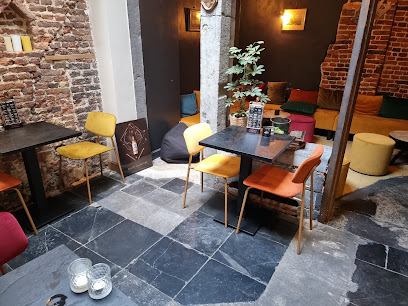
The Green Fairy 2
Experience the charm of Namur at The Green Fairy 2, where friendly vibes and great drinks await you in a cozy bar setting.

Les Poules à Lier - Namur
Explore the bustling scene at Les Poules à Lier, a premier beer hall and cocktail bar in Namur offering an extensive selection of local brews and crafted cocktails.

Local Phrases
-
- HelloBonjour
[bon-zhoor] - GoodbyeAu revoir
[oh ruh-vwahr] - YesOui
[wee] - NoNon
[nohn] - Please/You're welcomeS'il vous plaît
[seel voo pleh] - Thank youMerci
[mehr-see] - Excuse me/SorryExcusez-moi
[ehk-skew-zay mwa] - How are you?Comment ça va?
[koh-mohn sah vah] - Fine. And you?Bien. Et toi?
[byen. ay twah] - Do you speak English?Parlez-vous anglais?
[par-lay voo ahn-glay] - I don't understandJe ne comprends pas
[zhuh nuh kohm-prahn pah]
- HelloBonjour
-
- I'd like to see the menu, pleaseJe voudrais voir la carte, s'il vous plaît
[zhuh voo-dray vwahr lah kart, seel voo pleh] - I don't eat meatJe ne mange pas de viande
[zhuh nuh mahnj pah duh vyand] - Cheers!Santé!
[sahn-tay] - I would like to pay, pleaseJe voudrais payer, s'il vous plaît
[zhuh voo-dray pay-ay, seel voo pleh]
- I'd like to see the menu, pleaseJe voudrais voir la carte, s'il vous plaît
-
- Help!Au secours!
[oh suh-koor] - Go away!Allez-vous en!
[al-lay vooz ahn] - Call the Police!Appelez la police!
[ah-pay-lay lah poh-lees] - Call a doctor!Appelez un médecin!
[ah-pay-lay uh meh-deh-sahn] - I'm lostJe suis perdu
[zhuh swee pair-doo] - I'm illJe suis malade
[zhuh swee mah-lahd]
- Help!Au secours!
-
- I'd like to buy...Je voudrais acheter...
[zhuh voo-dray zah-shey] - I'm just lookingJe regarde juste
[zhuh ruh-gard zhewst] - How much is it?Combien ça coûte?
[kohm-byen sah koot] - That's too expensiveC'est trop cher
[say troh shair] - Can you lower the price?Pouvez-vous baisser le prix?
[poo-vez voo bay-say luh pree]
- I'd like to buy...Je voudrais acheter...
-
- What time is it?Quelle heure est-il?
[kell uhr ay-teel] - It's one o'clockIl est une heure
[eel ay oon uhr] - Half past (10)Dix et demi
[dees ay dem-ee] - MorningMatin
[ma-tahn] - AfternoonAprès-midi
[ah-pray mee-dee] - EveningSoir
[swahr] - YesterdayHier
[ee-ehr] - TodayAujourd'hui
[oh-zhoor-dwee] - TomorrowDemain
[duh-man] - 1Un
[uhn] - 2Deux
[duh] - 3Trois
[twah] - 4Quatre
[kah-truh] - 5Cinq
[sank] - 6Six
[sees] - 7Sept
[sept] - 8Huit
[wheat] - 9Neuf
[nuff] - 10Dix
[dees]
- What time is it?Quelle heure est-il?
-
- Where's a/the...?Où est...?
[oo ay] - What's the address?Quelle est l'adresse?
[kell ay la-dress] - Can you show me (on the map)?Pouvez-vous me montrer (sur la carte)?
[poo-vez voo muh mohn-tray sur lah kart] - When's the next (bus)?Quand est le prochain (bus)?
[kahn ay luh proh-shahn bus] - A ticket (to ....)Un billet (pour ...)
[uhn bee-yay poor]
- Where's a/the...?Où est...?
History of Namur
-
Namur's history dates back to prehistoric times, with archaeological discoveries indicating human presence as early as the Neolithic period. The strategic location at the confluence of the Sambre and Meuse rivers made it an attractive site for early settlers and traders.
-
During the Roman era, Namur became an important hub due to its strategic position. The Romans constructed roads and fortifications, contributing to the region's development. The area was part of the Roman province of Gallia Belgica.
-
In the Middle Ages, Namur flourished as a commercial center. The city was known for its markets and fairs, drawing merchants from across Europe. The Counts of Namur played a significant role in the region's politics and economy.
-
The Citadel of Namur, perched on a rocky outcrop, has been a focal point of the city's history. Originally a Roman fort, it was expanded over the centuries into a formidable fortress. The citadel witnessed numerous battles and sieges, particularly during the wars between France and the Habsburgs.
-
Namur came under Spanish rule in the 16th century as part of the Spanish Netherlands. The Treaty of Utrecht in 1713 transferred the region to the Austrian Habsburgs. During this period, the city saw significant fortification improvements and cultural development.
-
The 19th century brought industrialization to Namur. The establishment of factories and improved transportation networks, including railways and canals, transformed the city into an industrial hub. This period also saw urban expansion and modernization.
-
Namur experienced significant upheaval during both World Wars. In World War I, the city and its citadel were key defensive positions, leading to intense fighting. During World War II, Namur was again a strategic target, suffering occupation and damage.
-
Following World War II, Namur underwent extensive reconstruction. The city embraced its historical heritage while modernizing its infrastructure. Today, Namur is known for its vibrant cultural scene, historical landmarks, and as the capital of the Wallonia region.
Namur Essentials
-
Namur is conveniently located in the Wallonia region of Belgium and is accessible via various modes of transportation. The nearest major airport is Brussels Airport (BRU), approximately 65 kilometers away. From the airport, you can take a direct train to Namur, which typically takes around an hour. Alternatively, you can rent a car or take a taxi for a more direct route. Namur is also well-connected by train from other major Belgian cities such as Brussels, Liège, and Charleroi. The Belgian railway system (SNCB) offers frequent and reliable services.
-
Namur's public transportation system is efficient and user-friendly. The city has a network of buses operated by TEC (Transport en Commun), which covers most areas within Namur and its surroundings. Tickets can be purchased at kiosks, TEC offices, or directly from the bus driver. Taxis are also available, and can be found at designated taxi stands or booked via phone. For those who prefer exploring at their own pace, renting a bicycle is a popular option. Namur is a walkable city, and many of its attractions are located within a short walking distance from each other.
-
Belgium uses the Euro (EUR) as its official currency. Credit and debit cards are widely accepted in Namur, including in most hotels, restaurants, and shops. However, it is advisable to carry some cash for smaller establishments and markets. ATMs are plentiful and can be found throughout the city. Contactless payments are also commonly used and accepted in many places.
-
Namur is generally considered a safe city for tourists. However, like any urban area, it's important to stay vigilant. Avoid poorly lit areas at night and be cautious with your belongings, especially in crowded places like markets and train stations. The areas around the train station and some parts of the city center can be a bit more prone to petty crime, so extra caution is advised in these locations.
-
In case of emergency, dial 112 for urgent assistance, which covers police, fire, and medical emergencies. Namur has several hospitals and clinics that provide high-quality medical care. It is recommended to have travel insurance that covers medical emergencies. Pharmacies are widely available for minor health issues, and many pharmacists speak English. For police assistance, the main police station is located at Rue de Bruxelles 61.
-
Fashion: Do dress comfortably but neatly. While casual attire is generally acceptable, avoid overly revealing clothing, especially when visiting religious sites. Religion: Do show respect in churches and religious sites by dressing modestly and maintaining a quiet demeanor. Public Transport: Do validate your ticket before boarding buses. Don't eat or drink on public transport. Greetings: Do greet people with a polite 'Bonjour' or 'Bonsoir' depending on the time of day. A handshake is a common form of greeting. Eating & Drinking: Do try local specialties like 'escavèche' and 'blancs de poulet de Namur'. Don't refuse food or drink when offered, as it may be considered impolite.
-
To experience Namur like a local, make sure to visit the local markets, such as the Marché de Namur, where you can buy fresh produce and artisanal goods. Take a stroll along the Meuse River and enjoy a boat tour for unique views of the city. Engage with locals at cafes and bars; they are often friendly and willing to share insights about Namur's history and culture. Don't miss the Citadel of Namur for its historical significance and breathtaking views. For a unique culinary experience, try the local beer and cheese varieties.
Trending Landmark in Namur
-
Les Jardins d’Annevoie
-
Parc attractif Reine Fabiola
-
Château de Namur
-
parc Louise-Marie
-
Terra Nova
-
Musée Provincial Félicien Rops
-
Pont de Jambes
-
Namur Cathedral
-
Église catholique Saint-Loup
-
Musée des arts anciens
-
Museum of Decorative Arts of Namur
-
Le Jardin des Secrets
-
Belfry of Namur
-
Namur Tourist Office
-
Fort St. Heribert
Nearby Cities to Namur
-
Things To Do in Dinant
-
Things To Do in Louvain-la-Neuve
-
Things To Do in Durbuy
-
Things To Do in Leuven
-
Things To Do in Liege
-
Things To Do in Brussels
-
Things To Do in La Roche-en-Ardenne
-
Things To Do in Hasselt
-
Things To Do in Mons
-
Things To Do in Mechelen
-
Things To Do in Spa
-
Things To Do in Genk
-
Things To Do in Aalst
-
Things To Do in Maastricht
-
Things To Do in Antwerp











